
by John Boston
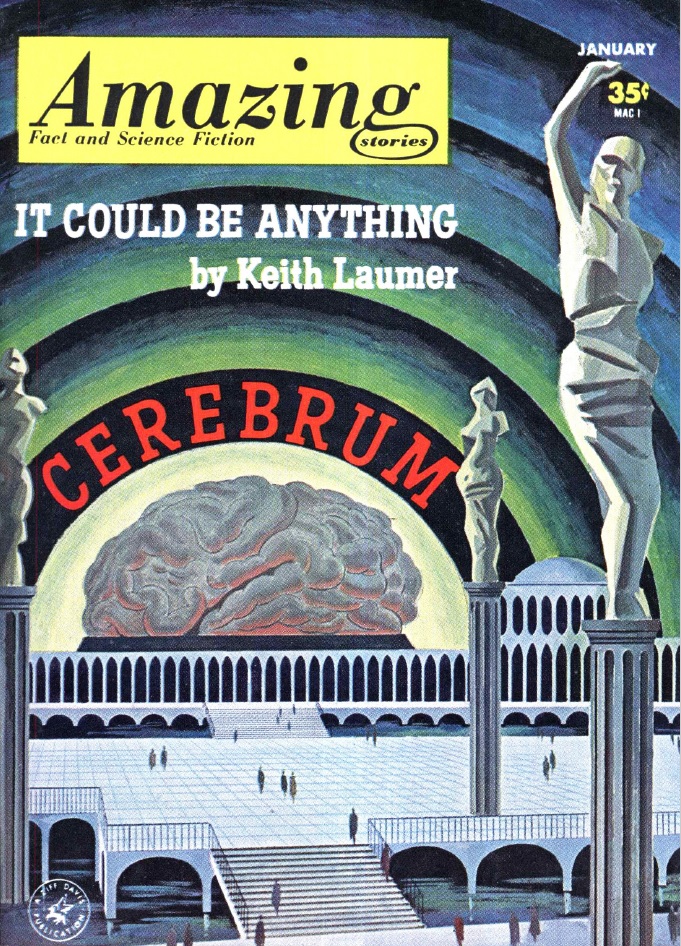
All right, Frogeyes,* dust off all the stars. We’re finally going to need them for this January 1963 Amazing, specifically for Keith Laumer’s novelet It Could Be Anything.
*Those without a classical education may ignore this and similar allusions.
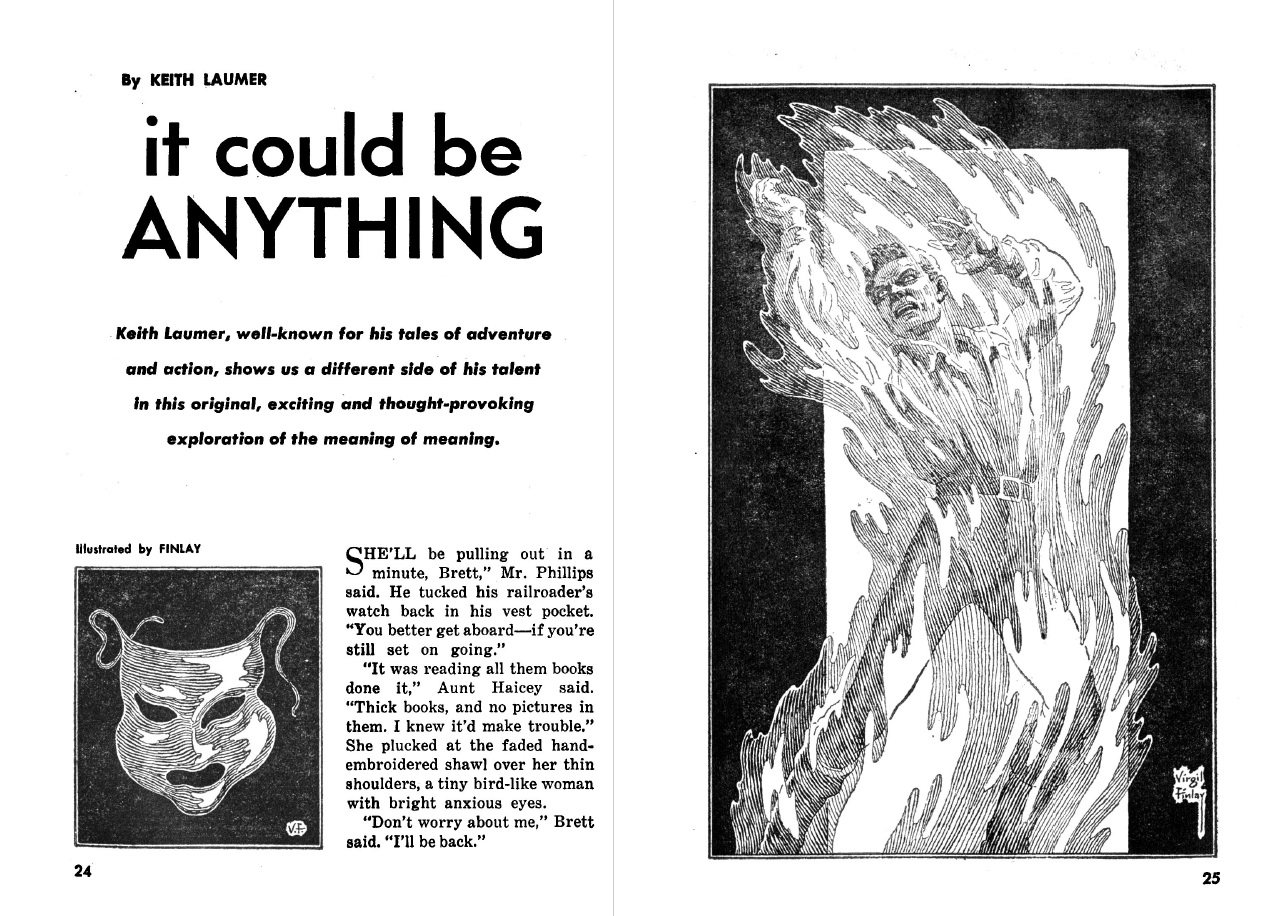
“Things are not what they seem” is a well worn SF device, employed by the likes of Heinlein, Sturgeon, and more recently Philip K. Dick. But it’s not worn out, as Laumer demonstrates. Young Brett is about to take the train out of the stereotypical small town of Casperton, heading for the unnamed big city, despite stereotypical remonstrances. His Aunt Haicey says, “It was reading all them books that done it. Thick books, with no pictures in them. I knew it would make trouble.” The stationmaster offers, “If I talk to Mr. J.D., I think he can find a job for you at the plant.” His girlfriend Pretty-Lee doesn’t show, not after their big argument in Rexall’s over her preoccupation with a movie magazine. But he boards anyway, and some time later finds himself on a deserted stopped train in the middle of a field where the tracks just stop, no clue as to why, but the city is visible on the horizon. So he walks. I won’t spoil the story’s revelations in detail, but Brett quickly learns that the people he encounters in the city, engaged in ordinary mundane activities like walking down the street and eating in restaurants, are not real—they are automatons acting out routines. What’s going on? The answer is pretty nasty, and the story quickly turns crude and violent. At the end, Brett is heading home to Casperton, with the similarity between the automatons’ routines and the behavior of the home folks not lost on him. The story is exceedingly well visualized, gaining power from Laumer’s attention to mundane sensual detail even in the midst of violent melodrama. Its impact is also enhanced by what isn’t there—an explanation. The story is told entirely from Brett’s limited viewpoint, ignorant of the larger picture even after his shattering experiences in the city, leaving the reader knowing very little about the comprehensive catastrophe that seems to have overtaken the world, but creating an unusually strong sense of a larger world outside the confines of the story about which one can only speculate. Five stars.

The cover story, Cerebrum by Albert Teichner, makes a nice contrast to the Laumer story—“nice” in the original sense of precise or fine, not the current debased usage—since it takes a well worn plot device and fails to revitalize it. In the future, everybody’s telepathic, and they’re all hooked up to the Central Synaptic Computation Receptor and Transmitter System, which routes thoughts like a telephone exchange, only better. Otherwise, nobody could hear themselves think through everyone else’s mental noise. But people who think negative thoughts about Central get Suspended, and now there’s a large and growing underclass of Suspendeds since Central seems to be making a lot of mistakes lately—but don’t think that or you’ll be Suspended too. Protagonist and family get Suspended and have to learn to live as outcasts on the margins; they discover what passes for an underground; then Central falls apart entirely and the brewing problems between Suspendeds and paraNormals (sic) conveniently disappear. So, it’s the early Galaxy routine of society distorted by an innovation, with The Machine Stops thrown into the mix, no more than routinely clever connect-the-dots stuff. Two stars; ten years ago when this sort of thing was newer, it might have seemed better. The cover, by Lloyd Birmingham, merits a comment as well: de Chirico repeats, this time as farce.
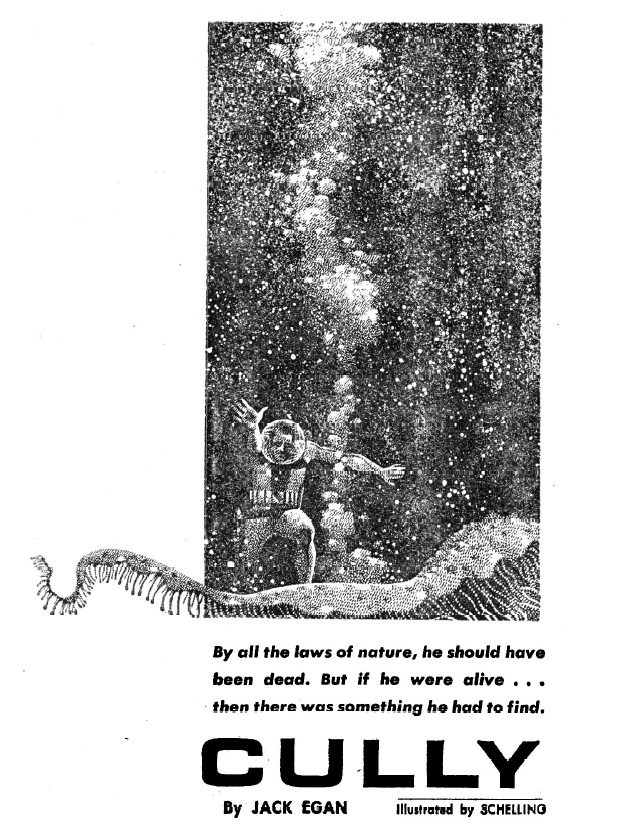
Jack Egan’s Cully, like his earlier World Edge from November, is a short tale told by (or for) a damaged consciousness, which any further explanation would spoil; this one is better written and less busy than its predecessor. Maybe Egan is getting the hang of it. Generously, three stars.
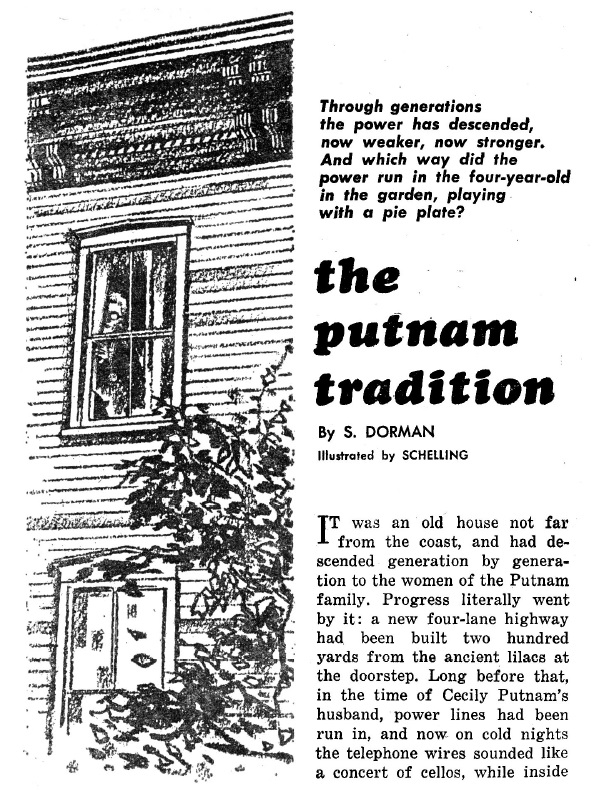
S. Dorman—presumably the Sonya Dorman who appeared in the October Ladies’ Home Journal—provides something else entirely in The Putnam Tradition, her first in the SF magazines: sort of like Zenna Henderson with sharper edges. The Putnams are a matriarchal and rather change-resistant New England family, witches or psi-talented as you prefer, whose children (the healthy ones) are mostly daughters, and whose husbands “spent a lifetime with the long-lived Putnam wives, and died, leaving their strange signs: telephone wires, electric lights, water pumps, brass plumbing.” And now young Simone’s husband Sam has brought them an “invasion” of large and small appliances, and their daughter doesn’t seem to have inherited the family talents. Is tradition dead? Or is something else going on? The story is told in sort of fairy-tale fashion, with the occasional startling image (“. . . power lines had been run in, and now on cold nights the telephone wires sounded like a concert of cellos, while inside with a sound like the breaking of beetles, the grandmother Cecily moved through the walls in the grooves of tradition.”). Dorman’s writing seems a little amateurish in places but it conveys the sense of a real individual behind the typewriter and not (unlike, say, Teichner’s) some device grinding up and recycling the last 50 SF stories she read. Four stars, and thanks for the fresh air.
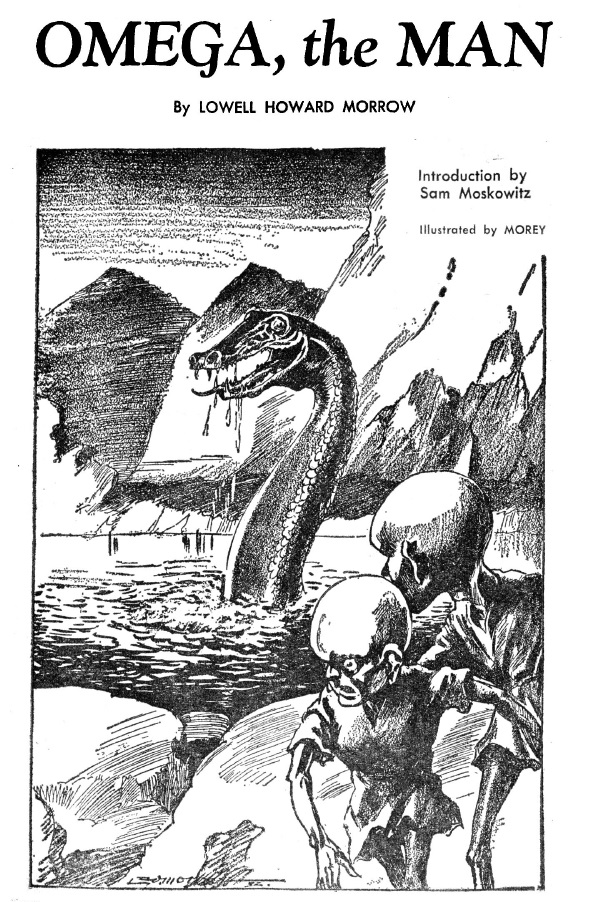
Bringing up the rear, or letting it down, is the “Classic Reprint” from the January 1933 issue: Omega, the Man by Lowell Howard Morrow, about Omega, the last human alive (well, he starts out with his wife Thalma and briefly acquires a son—Alpha, of course) on a dying Earth, with a schematic plot and the sort of bombastic style that one could barely get away with even then, and nowadays reads like parody. A bizarre Frankensteinian plot twist at the end comes much too late to redeem this fiasco. Moskowitz’s praise of it is almost as risible. One star.
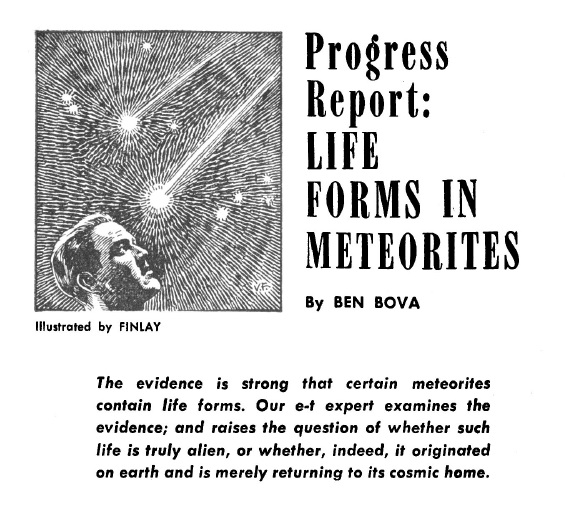
Ben Bova soldiers on with another article, Progress Report: Life Forms in Meteorites, again beautifully but inaptly illustrated by Virgil Finlay. Bova reviews findings on exactly what the title says, as usual assembling a fair amount of interesting information. He does seem to have his thumb on the scales sometimes, though, as when he recounts several competing theories about the nature of seemingly organic particles found in some meteorites: are they fossilized life forms, or crystalline structures that are the “intermediate step” between DNA molecules and living cells, or inorganic materials that contain lots of iron, or fossils that have been partly replaced by iron through a petrifaction process? “On balance, though,” Bova says, “it would appear that the particles are life forms, or at least, fossils of once-living cells.” But he doesn’t explain why he’s choosing one side or another in this technical debate. Still, three stars for pulling this material together in more or less plain English.
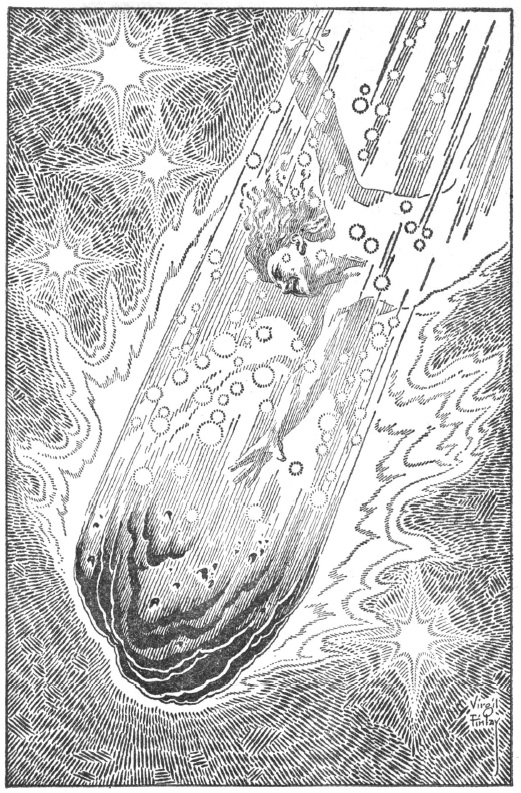
So: one excellent story, another very good one, and only one complete pratfall. Looks like progress. Of course I said that early last year too. Da capo. If the magazine can retain good new contributors like Dorman, Zelazny, and Ballard, maybe it can keep it up this time.


I've read about half of this issue. The other half will have to wait until tomorrow.
"Cerebrum" — You're right on the money. This reads exactly like an early, competent but undistinguished story from Galaxy.
"It Could Be Anything" — Wow, this was a wild ride. Again, you're quite correct; the fact that we never really learn exactly what's going on makes it compelling. A tiny bit more ambiguous and it would have been just frustrating, but Laumer hits just the right note.
"Cully" — Not bad. It's interesting to note that, like the Laumer, the strangeness of everything pulls in the reader. However, since everything is spelled out in detail at the end, it's not quite as effective.
More later!
I thought the Laumer was very good, though not quite 5 stars. It asks some interesting questions about what we think we know about the world outside our direct experience. Once the automata are revealed, it made me think a little bit of Heinlein's "They–", but there are very strong differences. It's also nice to see Laumer working on his serious side. Most of his non-comic work thus far has been all about the action, so something a little more cerebral (not that this lacks for action, it's just not as action-packed as "A Trace of Memory" or "King of the City") is a good change of pace.
Between John and Victoria, everything that needs to be said about the Teichner has been said. It did have a certain degree of readability, but that's about it.
"Cully" was interesting, though a bit tough at times. There's definitely some talent there, so let's hope to see more.
S. Dorman also shows promise. "Putnam" could have used some tightening up, maybe a little more editing, but again I look forward to more from this author.
"Omega"? I might be generous and bump it all the way up to two stars. On the other hand, I skimmed most of it. There was a bit of a craze for these "last man" stories in the late 20s and early 30s. Most of them were like this, and I don't think anybody ever wrote a good one.
I continue to be unimpressed with Ben Bova. I understand he makes his living as a technical writer, so you'd think he'd be better at communicating this stuff. I just get bored very quickly and move on. At least he's writing about real science, unlike, say, anything in Analog.
So, a good enough start to the issue, but horribly weighed down by the reprint. I know it's a cost-saving measure, but we all might be better served if they dumped it in favor of some of the new talent Miss Goldsmith has found. Honestly, she has a talent for it, with Laumer and Zelazny to her credit so far. If they must keep it, then perhaps somewhat newer works are called for.
I enjoyed the Teichner enough when it ran that I wrote a letter that Cele published a few issues later, praising the story. Haven't read it since, and I gather it wouldn't fare so well today.
Finishing up:
"The Putnam Tradition" — I like this one quite a bit. I thought there was a subtle touch to it at the end, and that the whole thing was quite imaginative and nicely written.
"Omega, the Man" — The author's old-fashioned style, unrealistic dialogue, and huge chunk of exposition spoil what should be a poignant tale with an almost Wellsian vision of the extreme far future. Some good descriptions here and there. The Grinner subplot seemed to come out of nowhere.
The Laumer and the Dorman (that's my original family name on my mother's side) were excellent. I daresay I'd have given both 5 stars. The former felt like an episode of The Twilight Zone — perhaps they'll adapt it for one of the long episodes coming out next year…
"The Putnam Tradition": http://www.gutenberg.org/ebooks/26743